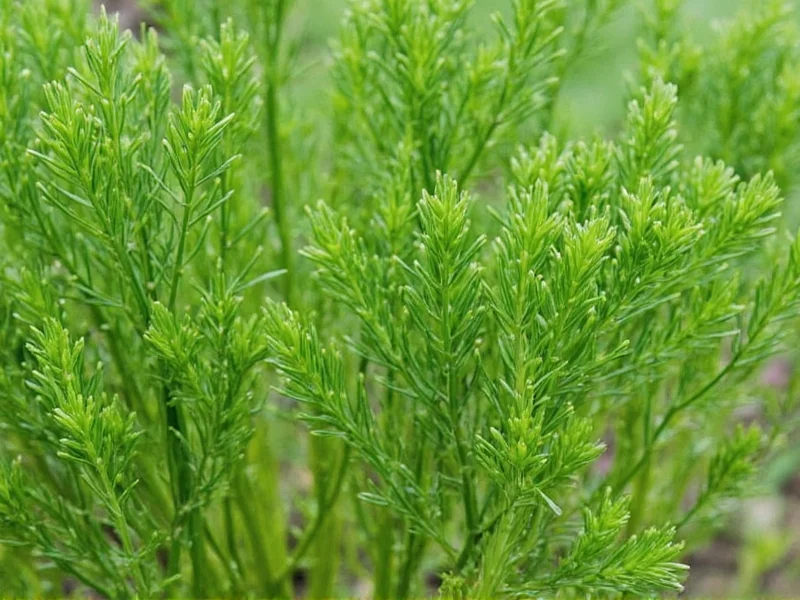Understanding herb measurements is crucial for recipe accuracy, especially when cooking with fresh ingredients like dill. Many recipes call for "a sprig of dill" without specifying exact measurements, creating confusion for home cooks. This guide provides precise measurements and practical substitution information to ensure your dishes turn out perfectly every time.
What Exactly Is a Dill Sprig?
A dill sprig refers to a single stem of the dill plant, typically 2-4 inches long, with feathery green leaves attached. In culinary terms, the entire stem section used as a measurement unit contains both the slender stem and the delicate leafy portions. Professional chefs and recipe developers consider the leafy portion as the primary contributor to flavor, while the tender lower stem also provides aromatic compounds.
Standard Dill Sprig Measurements
While sprig sizes can vary based on growing conditions and harvest time, culinary standards have established consistent measurements for recipe development. Understanding these measurements helps maintain recipe consistency across different cooking experiences.
| Measurement Type | Equivalent to 1 Dill Sprig |
|---|---|
| Volume (fresh) | 1-2 teaspoons chopped leaves |
| Weight (fresh) | 3-5 grams (0.1-0.2 oz) |
| Dried dill equivalent | 1/4-1/2 teaspoon |
| Stem length | 2-4 inches (5-10 cm) |
How to Measure Dill When Cooking
When your recipe calls for dill sprigs, follow these practical measurement techniques for consistent results:
- For fresh dill: Remove leaves from the stem and lightly pack them into a measuring spoon. One sprig yields approximately one level teaspoon of loosely packed leaves.
- For precise baking: Use a kitchen scale for the most accurate measurement, especially in delicate recipes where herb quantity significantly affects flavor balance.
- When substituting dried dill: Remember that dried herbs are more concentrated. Use one-quarter the amount of dried dill compared to fresh (so 1/4 teaspoon dried replaces one fresh sprig).
Factors Affecting Dill Sprig Size
Several variables influence the actual quantity of dill in a sprig:
- Growth stage: Younger dill plants produce smaller, more delicate sprigs with milder flavor
- Harvest time: Morning-harvested dill contains higher essential oil concentration
- Cultivar differences: Bouquet dill typically has larger fronds than fernleaf varieties
- Storage conditions: Freshness affects volume as dill wilts over time
Practical Substitution Guide
When you don't have fresh dill available, these substitution ratios maintain recipe integrity:
| Recipe Requirement | Fresh Dill Equivalent | Dried Dill Equivalent |
|---|---|---|
| 1 sprig | 1-2 tsp chopped | 1/4-1/2 tsp |
| 3 sprigs | 1 tbsp chopped | 3/4 tsp |
| 5 sprigs | 1.5 tbsp chopped | 1.25 tsp |
| 10 sprigs | 3 tbsp (1/4 cup) chopped | 2.5 tsp (5/6 tbsp) |
Culinary Tips for Using Dill
Maximize dill's flavor potential with these professional cooking techniques:
- Add fresh dill toward the end of cooking to preserve its delicate flavor compounds
- Use whole sprigs for garnishing fish dishes, then remove before serving
- Freeze fresh dill in ice cube trays with water or oil for long-term storage
- Combine dill with complementary herbs like parsley and chives for balanced flavor profiles
- When making dill pickles, use 3-5 sprigs per quart jar for optimal flavor infusion
Common Measurement Mistakes to Avoid
Many home cooks make these errors when measuring dill:
- Using the entire sprig including thick lower stem in measurements
- Packing fresh dill too tightly into measuring spoons
- Not adjusting for dill's freshness (wilted dill provides less volume)
- Using equal fresh-to-dried ratios instead of the proper 4:1 conversion
- Measuring dill before washing, which adds excess water weight
When Precision Matters Most
Certain recipes require particularly precise dill measurements:
- Fermented foods: Too much dill can overpower pickles and fermented vegetables
- Fish dishes: Dill complements seafood but excess amounts create bitter notes
- Cold soups: In dishes like borscht, dill quantity significantly affects final flavor
- Baking: In savory breads and biscuits, precise herb measurements ensure balanced flavor

